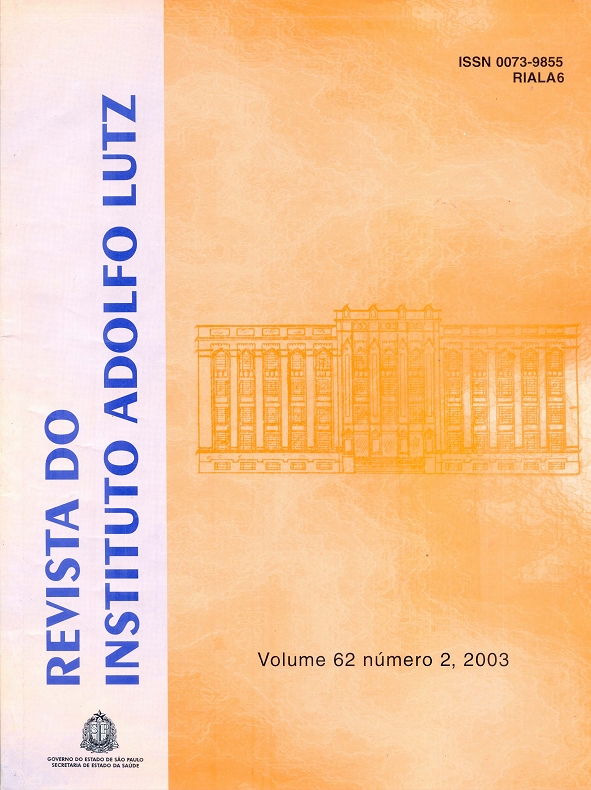Resumo
A great number of the fungal species, under specific conditions, can produce toxic secondary metabolites known as mycotoxins. About 20 groups of such toxins are known today but some have received special attention due to their toxicity and widespread natural occurrence: aflatoxins, zearalenone, ochratoxin A, fumonisins and trichothecenes. The trichothecenes constitute a group of more than a hundred
compounds characterized by the presence of the system 12,13-epoxy-trichotec-9-en in their structures. However, most of the known trichothecenes have been isolated only in laboratory conditions. Just a few have been isolated and characterized as natural contaminants. Among them, deoxynivalenol (DON),
nivalenol (NIV), toxin T-2 (T2), diacetoxyscirpenol (DAS) and less frequently the derivatives 3-acetyl-deoxynivalenol (3-AcDON), 15-acetyl-deoxynivalenol (15-Ac-DON), fusarenone X (FX) and the toxin HT-2 (HT2). DON is the trichothecene most frequently found in foods and feeds and it’s also the less toxic
of this family. Despite the fact that corn is one of the substrates more susceptible to this type of contamination, there is little information on the occurrence of trichothecenes in Brazilian corn. Brazil ranks third in world production of corn, harvesting about 30 million tons annualy, and corn is a grain with great
impact in Brazilian economy. These facts point to the need to evaluate the extension and the type of trichothecene contamination in national corn. On the other hand, the similarity of the trichothecene chemical structures requires the use of a high resolution gas chromatographic method for their separation.
The differing toxicities for the members of this group of toxins requires, by their turn, that the identity of each toxin be confirmed by a system capable of great degree of reliability such as mass spectrometry. The present work aimed at evaluating the occurrence of trichothecenes in corn planted in the state of São Paulo and in corn products commercialized in the city of São Paulo. DON and NIV were chosen for this investigation due to their worldwide occurrence. DAS, HT2 and T2 were included due to their high toxicity and their natural
occurrence in foods and feeds. In order to reach the objectives of the present work, a gas chromatography/ mass spectrometry method for simultaneous determination of these five trichothecenes was optimized and evaluated. After optimization the method presented detection limits ranging from 20 to 60 ng/g for DON, from 10 to 40 ng/g for NIV, 20 to 120 ng/g for DAS, 20 to 50 for HT2 and from 20 to 100 ng/g for T2, varying according to the tested matrices (dried corn, canned sweet corn, corn grits, corn flour, hominy sweet meal, corn meal and corn flakes). Similarly, the recoveries ranged from 83,0 to 113,0% for DON, 84,6 to 114,5% for NIV, 52,1 to 122,7% for DAS, 81,8 to 155,4% for HT2 and 71,1 to 95,9% for T2. A survey was conducted in
samples of corn grown in São Paulo state and also in cornbased products commercialized in the city of São Paulo. Eighty samples of corn from two cooperatives located in the state of São Paulo were analysed. Eleven samples presented traces of NIV and another sample had traces of DON. Besides that, five samples showed levels of NIV ranging from 51 to 106 ng/g and one of them was co-contaminated with 71 ng/g of DON. Seventyeight samples of corn-based products commercialized in São Paulo city were analyzed. Among these samples, only one sample of corn flour, presented DON and NIV. Another sample of corn grits, had the toxins T2 an HT2 at the levels of 555ng/g and 767 ng/g, respectively. The results of the two surveys during the
years 2000 to 2002, indicated a low occurrence of trichothecenes, and as a consequence a low risk for the consumers. Due to the well known variability in mycotoxins contamination of foods from year to year, only after several years of surveyng corn planted in the state of São Paulo and corn products commercialized in the city of São Paulo, it will be possible to have a complete picture of the contamination of trichothecenes
in corn and corn products.

Este trabalho está licenciado sob uma licença Creative Commons Attribution 4.0 International License.
Copyright (c) 2003 T. V. Milanez
